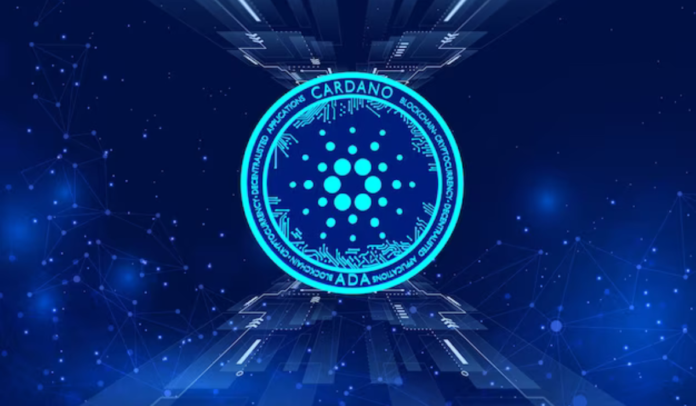As one of the most promising and innovative blockchain platforms, Cardano continues to capture the attention of the cryptocurrency community. In this exploration of “Cardano Overview and Updates,” we dissect the intricate components that constitute the Cardano blockchain, offering a comprehensive understanding of its structure, functionality, and the latest updates shaping its evolution.
1. Introduction to Cardano: A Brief Overview
Commencing our journey, we provide a brief yet insightful introduction to Cardano, setting the stage for a detailed exploration of its key components. Understand the foundational principles that differentiate Cardano in the competitive blockchain landscape.
2. Cardano’s Three-Layered Architecture
Delve into the unique three-layered architecture of Cardano, consisting of the Cardano Settlement Layer (CSL), the Cardano Computation Layer (CCL), and the Cardano Control Layer (CnCL). Uncover the distinct roles and functions each layer plays in the overall framework of Cardano.
3. Ouroboros: Cardano’s Proof-of-Stake Consensus Algorithm
Explore the cornerstone of Cardano’s security and sustainability – the Ouroboros consensus algorithm. Understand the intricacies of this proof-of-stake protocol, its role in maintaining network integrity, and how it contrasts with traditional proof-of-work algorithms.
4. Native Cryptocurrency: ADA
An in-depth look into ADA, Cardano’s native cryptocurrency. Understand its role within the ecosystem, its use cases, and how it facilitates transactions and interactions within the Cardano network.
5. Smart Contracts on Cardano: Alonzo Upgrade
Cardano’s journey towards supporting smart contracts reached a significant milestone with the Alonzo upgrade. Investigate the implications of this upgrade, its impact on decentralized applications (DApps), and how it positions Cardano in the broader blockchain landscape.
6. Staking on Cardano: Incentivizing Participation
Cardano’s staking mechanism is a key component of its ecosystem. Explore how staking works on Cardano, the incentives for participants, and its contribution to the network’s security and decentralization.
7. Governance: Empowering the Cardano Community
Cardano’s approach to governance sets it apart. Understand the decentralized governance model, explore how the community actively participates in decision-making, and the mechanisms in place to ensure a fair and inclusive governance process.
8. Cardano Improvement Proposals (CIPs): Driving Innovation
Dive into the world of Cardano Improvement Proposals (CIPs), the driving force behind innovation and updates on the platform. Explore notable CIPs that have shaped the evolution of Cardano and the community’s role in proposing and implementing improvements.
9. Interoperability and Cardano: Connecting Blockchains
Examine Cardano’s approach to interoperability, exploring how it aims to connect with other blockchains. Understand the potential impact of interoperability on the broader blockchain ecosystem and Cardano’s role in fostering collaboration.
10. Recent Updates and Roadmap
Stay updated on the latest developments by exploring Cardano’s recent updates and its roadmap for the future. From scalability solutions to partnerships, gain insights into the ongoing efforts to enhance and expand the capabilities of the Cardano blockchain.
FAQs: Frequently Asked Questions
Q1: How does Cardano differ from other blockchain platforms?
A1: Cardano’s three-layered architecture, proof-of-stake consensus, and commitment to scientific principles set it apart, focusing on security, sustainability, and scalability.
Q2: Can anyone participate in Cardano’s governance process?
A2: Yes, Cardano’s governance is decentralized, allowing anyone holding ADA to participate in key decision-making processes through voting and proposals.
Q3: What are the key benefits of staking ADA on Cardano?
A3: Staking ADA on Cardano offers participants the opportunity to earn rewards, support network security, and actively contribute to the platform’s decentralization.
Q4: How does Cardano plan to achieve interoperability with other blockchains?
A4: Cardano is exploring cross-chain communication protocols and standards to facilitate interoperability with other blockchains and foster collaboration.
Q5: What is Cardano’s approach to handling scalability challenges?
A5: Cardano addresses scalability through its layered architecture and ongoing research and development efforts, ensuring a sustainable and scalable blockchain.
Conclusion
In conclusion, the key components of the Cardano blockchain form a sophisticated and robust ecosystem. From its unique architecture to the implementation of smart contracts and ongoing governance innovations, Cardano continues to shape the future of blockchain technology. As we navigate through the intricate layers of Cardano, it becomes evident that its commitment to scientific principles, community participation, and continuous improvement positions it as a prominent player in the ever-evolving blockchain landscape.

